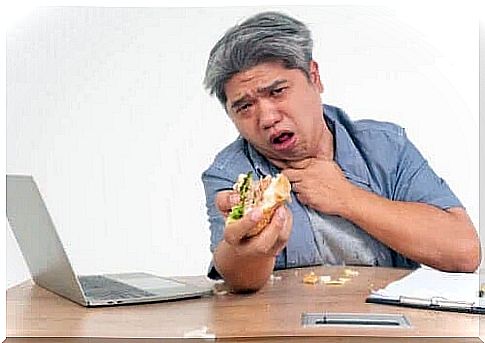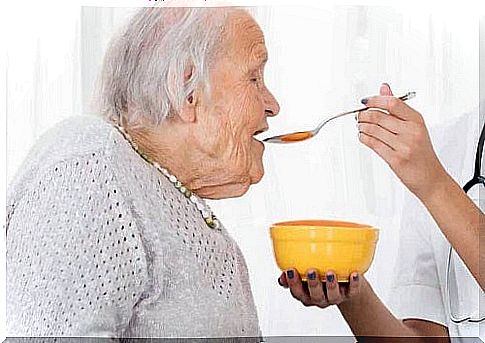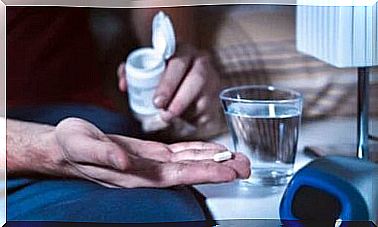Nutrition In Dysphagia: What Does It Entail?

The diet in case of dysphagia must be adapted to the needs of each patient. In general, it is important to pay attention to the texture of food, as there is a risk of suffocation. So what do you need to know?
For starters, let’s remember that a normal swallow allows all food to pass from the mouth into the esophagus. It is necessary to synchronize the structures of the head, neck and chest and close the airways to prevent their obstruction.
This process is characterized by efficiency. We can ingest all the food and fluids needed by the body; And it’s also about safety, because swallowing protects the airways from possible complications.
What is dysphagia?
The term dysphagia comes from two Greek words: “dys” (difficulty) and “phage” (food). It refers to a feeling of difficulty swallowing solid or liquid foods and can sometimes even cause pain.
If a person has difficulty swallowing solid food, it indicates an obstruction problem, while dysphagia when swallowing fluids indicates a functional disorder.

Types of dysphagia
What are the causes of dysphagia?
Health consequences
Nutrition in dysphagia: what does it entail?

Nutrition in dysphagia
As already mentioned, the degree of dysphagia or food tolerance is what will determine the texture of the food that the individual will eat. In essence, in order to obtain the right texture, it is possible to thicken liquids with commercial products.
Likewise, we can dilute the solids to get the texture of mashed potatoes or nectar. Moreover, it is possible to use dyes to improve the appearance of food.
In addition, it is important that the final textures are homogeneous, not sticky. It should also not break easily. Another important aspect is the volume. Similarly, if necessary, the use of nutritional supplements may be considered, following the advice of a professional.
The sooner this condition is detected, the better. This means that it will be easier to prevent its progression, to prevent complications and to take care of the patient’s health.









